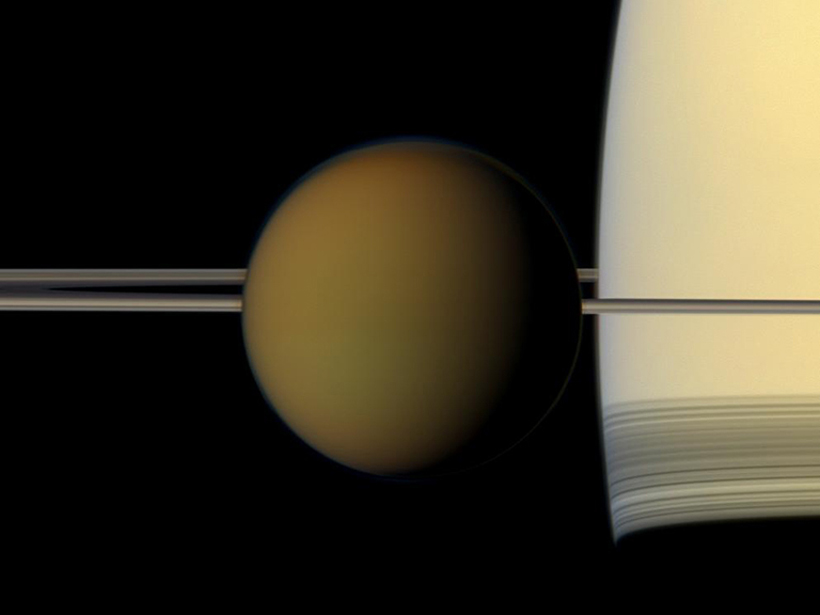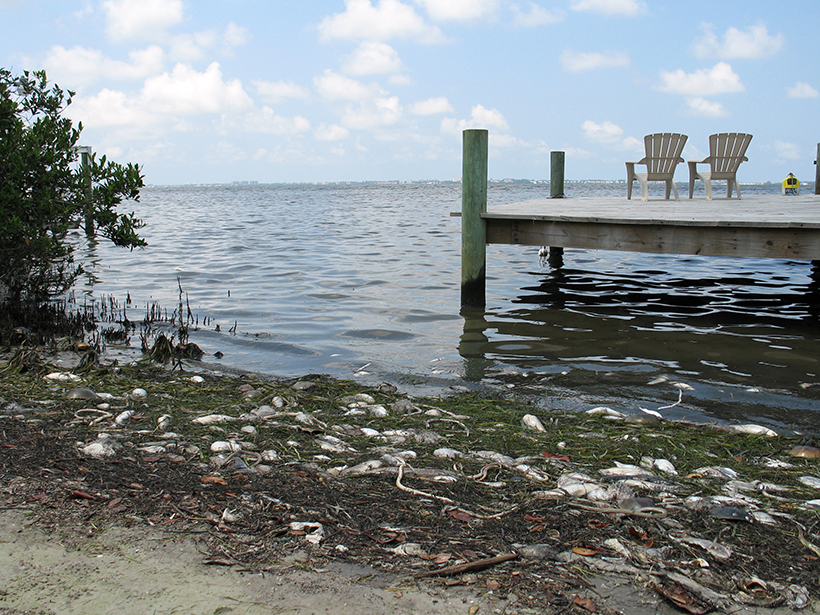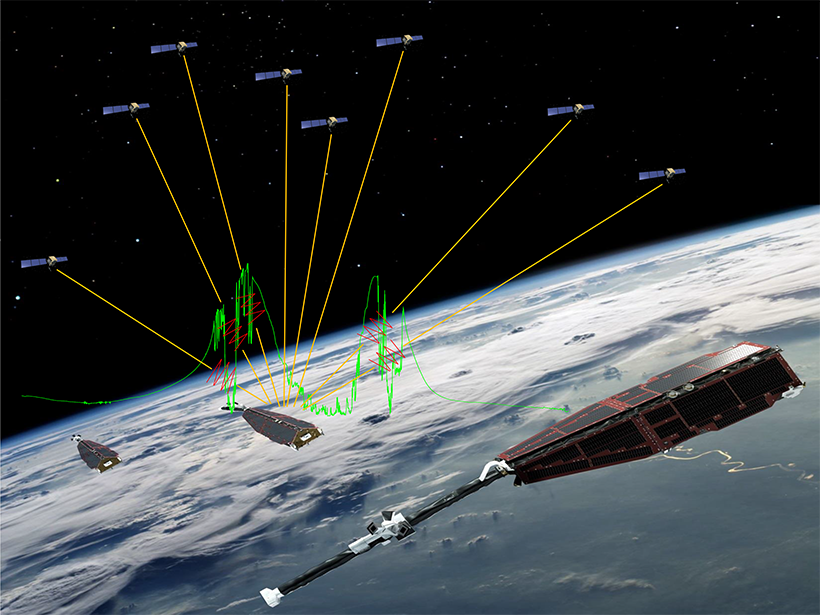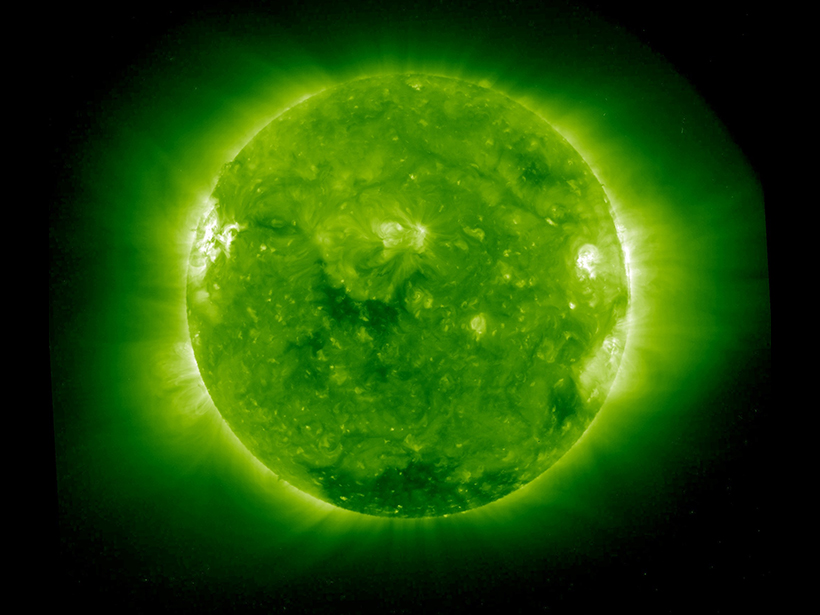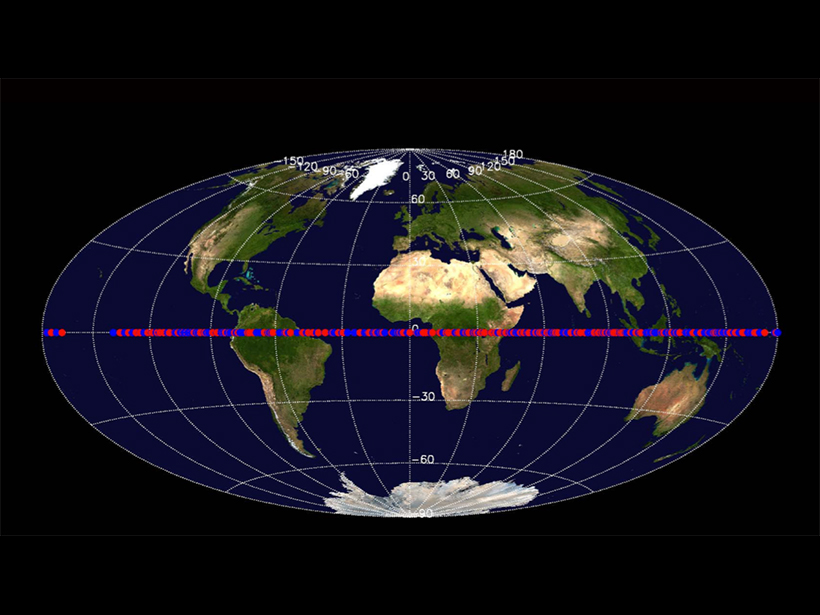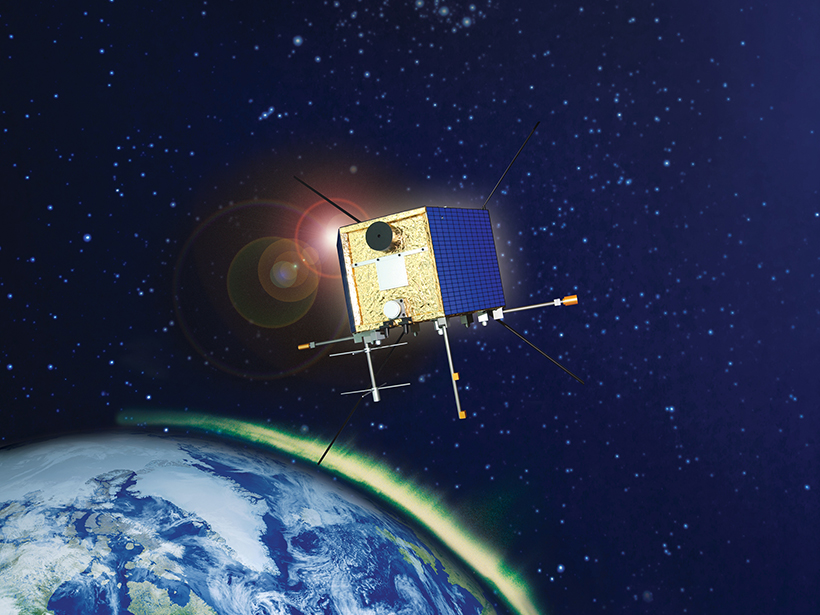Accurate measurements of changes in sea and land levels with location and time require making precise, repeated geodetic ties between tide gauges and satellite positioning system equipment.
satellites
The Curious Case of Titan’s Missing Clouds
Two instruments, one region on Titan: One instrument saw clouds, the other didn't—what's going on?
First of Next Generation of U.S. Weather Satellites Hits the Sky
The novel spacecraft and three sister satellites to follow are expected to vastly improve storm forecasting.
Coastal Observations from a New Vantage Point
The NASA Geostationary Coastal and Air Pollution Events satellite mission plans to keep an eye on short-term processes that affect coastal communities and ecosystems.
What Causes GPS Signal Loss on Satellites like Swarm?
Using data from the European Space Agency's Swarm mission, scientists find that abrupt drops in the ionosphere's electron density may cause low-orbiting satellites to lose contact with GPS satellites
Scientists Get First Glimpse of Solar Wind as It Forms
Using computer-processed images from Sun-watching satellites, scientists observed solar wind emerging from the Sun's corona.
Scientists Map Temperature and Density in Earth’s Exosphere
Data from multiple orbiters give a clearer picture of how density and temperature interact and what that could mean for future satellite missions.
Predicting Space Weather, Protecting Satellites
A new model predicts electron and ion fluxes at geosynchronous orbit an hour ahead of time, allowing satellite operators to protect their instruments.
Tracking Ions at the Edge of the Atmosphere
The first results from a recently launched satellite hold promise for studying solar storms, the very top of Earth's ionosphere, and how the atmosphere is evolving.
Rapidly Activated Satellite Completes A European Constellation
Sentinel-1B will move to a new orbit on the other side of our planet from its sister spacecraft Sentinel-1A.


